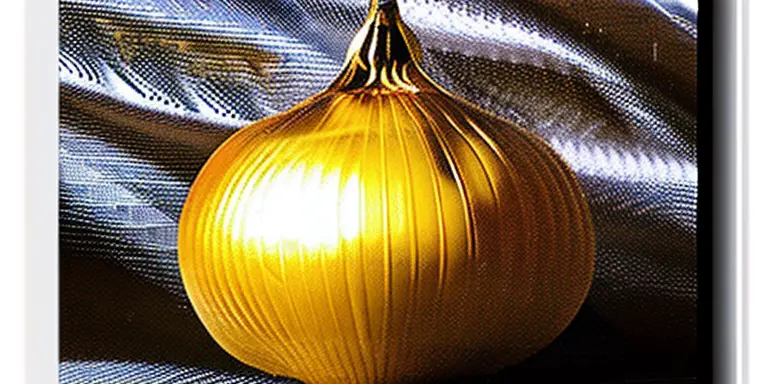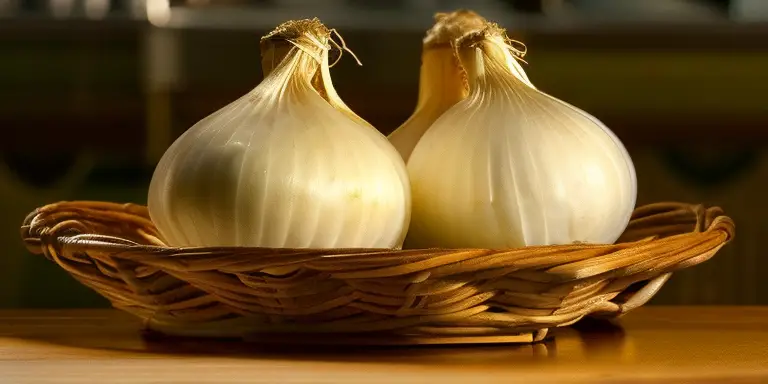Good morning dear Foods Fact lover. Welcome my today’s issue sweet onions vs white onions. Whether you’re making soup, dressing, vinaigrette, or onion rings, onions are a staple of the kitchen. It is mild in flavor and work well with all types of cuisines.
Oftentimes, cooks use white onions for their white color and mild flavor. On the other hand, sweet onions are yellowish- to red-skinned onions that have a strong onion flavor. These onions have a sweet taste and often go well with milder dishes.
I will discuss over the article the difference between white onions and sweet onions, how to store for maximum freshness, Cooking process, and choosing the right onion of your dish. Let’s start.
What are Sweet Onions Actually?

Sweet onions are white varieties of onion with a mild flavor and high sugar content. They are available seasonally in the US, with Walla Walla, Vidalia, Texas sweet, Maui onions being some of the most popular varieties.
Varieties of sweet onions include white onion, yellow onion, red onion, shallot, scallion, green onion, and so on.
They are best used for sautéing and caramelizing. This means using them to enhance the flavors of dishes by adding sweetness and a pleasant aroma.
This type of onion can be used in sandwiches and vegetable platters as its light skin makes them easy to handle and makes them more likeable than regular onions.
The main benefit of consuming sweet onions is their nutritional value. Besides being delicious and versatile, they also provide health benefits due to their high Ratio of dietary fiber to calories (fiber helps you feeling full), beneficial vitamin C content (vitamin C helps your skin stay healthy), and potassium (great for heart health).
What are White Onions Actually?

White onions have a white papery skin and are milder and sweeter in flavour than yellow onions. White onions are often used in raw preparations such as salads and salsas due to their shorter shelf life and milder flavour.
This white onion is easy to distinguish from yellow onions by its larger size. To reduce the strong flavour of white onions, they can be soaked in cold water for an hour.
White onions are not to be confused with leeks, which have a white portion used for flavouring stocks and soups.
The Difference Between Sweet and White Onions
White onions and yellow onions are two of the most commonly used onions in cuisines all around the world. They both have distinctive flavor and skin color, but there are a few differences between them that you need to be aware of.
White onions are larger than white onions and have a white skin. Their flavor is milder and sweeter than yellow onions, but they have a papery white skin.
White onions are sharper than yellow onions and this needs to be taken into consideration while using them.
However, white onions can be used as a substitute for yellow onions, but they will still be more pungent. So if you want to use white onion in your recipes, it’s important to consider the flavor difference between the two types of onions when choosing which one to use.
How to Store Onions For Maximum Freshness
When it comes of onions are purchased and used, the onion should be kept in a cool, dark place with ample ventilation. This will help keep the onion’s flavor and color bright.
Also, sweet onions can be wrapped in paper towel and stored in the refrigerator. Green onions can be stored in a jar filled with water just covering the roots.
Unpeeled onions should not be kept in the refrigerator as they will become limp and lose their crispness. However, if you must store them, try to keep them as dry as possible.
You can also check out our blog: sweet onions vs white onions to get more information on how to store onions for maximum freshness and flavor.
Cooking with Sweet and White Onions
Sweet onions are a versatile ingredient that can be used in many different dishes. They have a mild flavor and are often used in salads, sandwiches, and wraps.
Additionally, sweet onions can be used to make relish, jam, or onion rings.
White onions are white and onion-y in flavor and can be used as a substitute for yellow onions in cooking. White onions also have a similar flavor profile to white onions, making them a good option for those who don’t enjoy the taste of yellow onions.
Overall, sweet onion is an ingredient that can add great flavor to dishes without overpowering them with its unique flavor.
Tips for Choosing the Right Onion for Your Dish
Tips: 1. With so many different types of onions available, it can be hard to decide which one to use for your dishes.
Tips: 2. Different onions can bring different levels of flavor and texture to your recipes, but it’s vital to understand the types of onion before making a decision.
Tips: 3. Different onion types can be used for different purposes – from sweet onions to white onions – and each type has its own unique characteristics that can help make your dishes flavorful and delicious.
Tips: 4. When choosing onion for your dish, consider the size of onion and the dish you are making.
Tips: 5 For most dishes, small white onions work well as they have sweet flavor and white color. However, small red onions add some redness and bite while large red onions have a more complex flavor.
Tips: 6. In addition, consider the type of onion used in the recipe – whether it’s sweet or white onion.
Tips: 7. Different types of onion have different attributes that can complement a dish in different ways – so use kitchen equipment to make sure your onions are cooked properly.
Frequently Asked Questions
What are the best ways to cook sweet onions?
There are many ways to cook sweet onions, but some of the most popular include:
1. Raw: You can enjoy sweet onions raw as they are a healthy and low calorie option.
2. Fried onion rings: Fried onion rings are a popular way to enjoy sweet onions as they are crispy and flavorful.
3. Stuffing: Sweet onions can be stuffed into different types of recipes like mushrooms or tomatoes.
4. Caramelizing: Caramelizing onions takes them from sweet to savory with a delicious browned crust.
5. Sautéing: Sautéing onions is a great way to add sweetness and flavor to your meals. They can also be used for other sauces and toppings like Vidalia onions for BBQs and salads.
What are the best ways to cook white onions?
To cook white onions the best way is to first peel them and then cut them into thin slices. You can then either fry or bake the onion slices in a moderate amount of oil until they are golden brown and sweet. You can also use white onions in salads, sandwiches, wraps, or caramelized onion dishes like guacamole and salsa.
What are the benefits of cooking with sweet onions?
There are a lot of benefits to cooking with sweet onions. Here are a few:
1. Sweet onions are milder and contain less sulfur than other varieties, making them a great choice for raw eating, frying, and stuffing.
2. Sweet onions are popularly used in salads, relishes, and as a garnish.
3. Sweet onions have a light skin and are larger than yellow onions, making them great for sautéing and caramelizing.
4. Sweet onions are available seasonally in regions like Washington, Georgia, and Hawaii.
5. Sweet onions have a high sugar content, giving them a sweet flavor.
When should I use the White onions?
When white onions are in season, they should be used for fresh salsa or homemade guacamole. They have a milder and sweeter flavor that is perfect for salsa or guacamole. White onions can also be used in cooked preparations such as mirepoix (a mixture of onion, celery, and garlic) or the cajun trinity (onion, red pepper, and green bell pepper). They can be added raw to soups such as pozole or menudo.
Conclusion
Choosing the type of onion you opt for when preparing savory dishes is essential. Both types are typically made from yellow or white bulbs with a mild onion flavor. However, white onions have a sharper flavor and are usually used in raw preparations while sweet onions are typically used in cooked dishes. When selecting onions, ensure they are firm and unblemished. The onion should also be fragrant and free of blemishes, bruises, or spots. If you are not sure which onion to use for your dish, comment below and we’ll help you choose!
